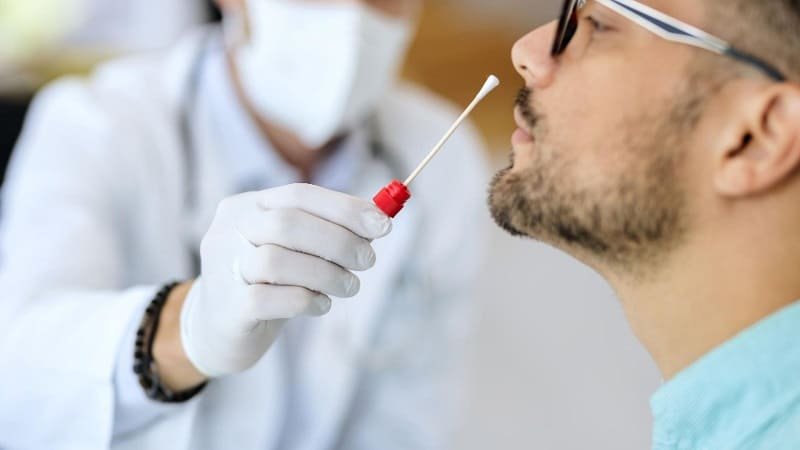Introduction
Pneumonia, a common respiratory infection, can be a challenging experience. The good news is that recovery is possible, and recognizing the signs that pneumonia is improving is crucial for a smoother journey back to health. In this simple guide of Signs that pneumonia is improving , we’ll break down the key indicators of improvement so that you can better understand your progress or that of your loved ones.
Fever Begins to Subside:
One of the initial signs that pneumonia is on the mend is a reduction in fever. Pneumonia often causes a spike in body temperature as the immune system fights the infection. As your body gains control, the fever gradually subsides. Keep an eye on your temperature regularly, especially if you’ve been feeling unwell.
Coughing Becomes Less Intense:
Pneumonia often brings on a persistent and sometimes forceful cough. As your body starts to recover, you’ll likely notice a decrease in the intensity and frequency of your cough. Initially, the cough may help clear mucus and irritants from your airways, but an improving condition means a gentler, less bothersome cough.
Breathing Becomes Easier:
Difficulty breathing is a common symptom of pneumonia. The good news is that as your lungs heal, you should find it easier to take deeper breaths. While complete resolution may take time, improvements in your ability to breathe comfortably are positive signs that your body is on the road to recovery.
Chest Pain Gradually Subsides:
Chest pain is often associated with pneumonia due to inflammation in the lungs. As the infection clears, you’ll likely experience a reduction in chest pain. This positive change means that activities that once caused discomfort should become easier as your body heals.
Appetite and Energy Return:
Pneumonia can leave you feeling fatigued and with little to no appetite. Improvement in these areas is a positive sign that your body is regaining strength. You might find yourself feeling less tired and more interested in eating a healthy diet, essential for a full recovery.
Clearer Chest X-rays:
Medical professionals often use chest X-rays to monitor pneumonia. Clearer X-ray results over time indicate that the infection is subsiding. Attending follow-up appointments and discussing your X-ray results with your healthcare provider can provide valuable insights into your recovery progress.
Stable Oxygen Levels:
For more severe cases, oxygen support may be necessary. Monitoring and maintaining stable oxygen levels are crucial indicators of improvement. As your lungs recover, the need for supplemental oxygen may decrease, eventually leading to its discontinuation.
Conclusion:
Recognizing the signs that pneumonia is improving is essential for both patients and caregivers. Watching for these positive indicators – a decrease in fever, a less intense cough, easier breathing, reduced chest pain, a return of appetite and energy, clearer chest X-rays, and stable oxygen levels – can provide reassurance during the recovery process. If you or someone you know is experiencing these improvements, it’s a positive step towards better health. Remember, always consult with your healthcare provider for personalized advice and guidance on your journey to recovery.
Faq related to "Signs that pneumonia is improving- Explained in Simple"
Signs of improving pneumonia include a reduction in fever, a less intense and frequent cough, easier breathing, diminished chest pain, a return of appetite and energy, clearer chest X-rays, and stable oxygen levels.
The timeline for improvement varies from person to person and depends on factors such as the severity of the infection, overall health, and promptness of treatment. Generally, noticeable improvements may begin within a few days to a week with proper medical care.
Yes, you can monitor your improvement at home by tracking your temperature for a reduction in fever, observing changes in the intensity and frequency of your cough, paying attention to easier breathing, and noting any improvements in chest pain. However, it’s crucial to stay in touch with your healthcare provider for guidance.
Chest pain is often associated with inflammation in the lungs during pneumonia. As the infection clears, chest pain should gradually subside, making daily activities more comfortable.
Rest is crucial for recovery, as is maintaining a healthy diet to replenish energy. Follow your healthcare provider’s advice regarding medications, attend follow-up appointments, and avoid smoking or exposure to secondhand smoke.
If you experience worsening symptoms or if improvement is not observed, it’s essential to contact your healthcare provider promptly. Pneumonia can be a serious infection, and medical guidance is crucial for effective treatment.
Chest X-rays provide visual insights into the condition of the lungs. Clearer X-ray results over time indicate that the infection is subsiding, offering valuable information to healthcare providers about the progress of pneumonia recovery.
The return of energy and appetite varies among individuals. As your body fights off the infection, you should gradually notice an improvement in these areas. If fatigue or loss of appetite persists, consult with your healthcare provider.
It’s essential to complete the full course of prescribed medications, even if you start feeling better before the medication is finished. This ensures that the infection is fully eradicated, reducing the risk of a relapse.
While the risk of pneumonia recurrence is generally low, it is not impossible. Taking preventive measures such as maintaining good hygiene, staying up to date with vaccinations, and avoiding exposure to respiratory irritants can help reduce the risk of reinfection.







